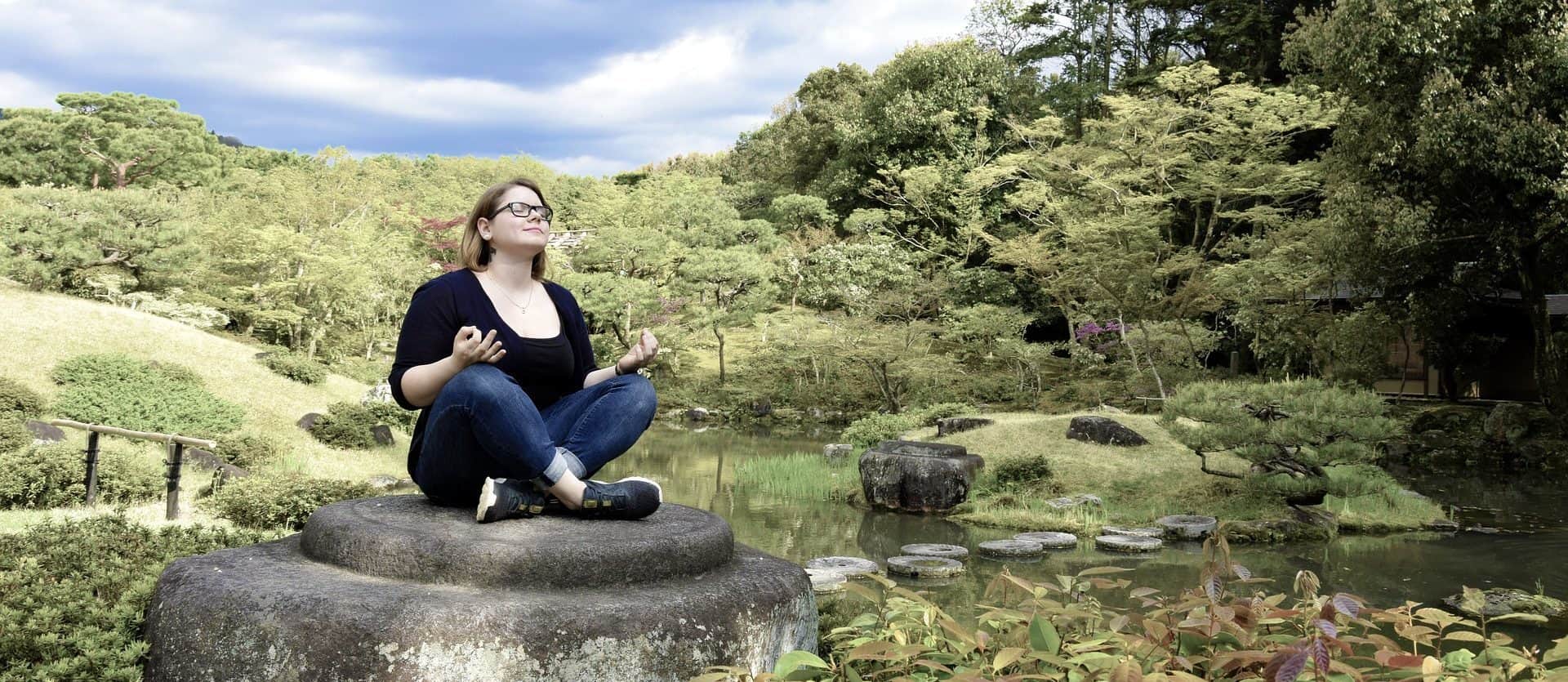Apr 26 - Apr 28, 2024
Yoga Retreat for Women of Color
A divine space for women of color to gather and share in the practices of Yoga.
View a listing of all our programs, workshops, and events—including our best-selling Happiness Retreat, Silent Meditation Retreat, and Ayurveda Wellness Cleanses.
Order a copy of our latest retreat guide and discover all the ways to relax, renew, and discover inner peace—programs, events, workshops, spa treatments, and more.
Quiet the mind and align with the present moment in our happiness, meditation, and silence programs.
You choose the dates, the activities, and Ayurveda treatments—we’ll do the rest. The perfect custom vacation!
The ancient science of Ayurveda gives us all the tools we need to live a holistic, healthy, and happy life in today’s modern world.
Guest teachers, thought leaders, authors, and experts inspire with their timely wisdom and transformative programming.

Ayurveda’s Holistic Approach to Menopausal Wellness
A 4-Week Online Retreat
Our on-demand programs are great introductions to the healing power of Ayurveda. Discover the Ayurvedic Daily Routine, overcome insomnia, and more—whenever, wherever!
Explore our campus in an interactive 360° virtual tour with guided navigation or on Google Maps.
Discover an extraordinary space for transformation and community building in the Blue Ridge Mountains.
Explore our campus in an interactive 360° virtual tour with guided navigation or on Google Maps.

Some embark on the path of meditation to get over an emotional crisis or personal loss, others meditate to get clarity, calmness, and focus to deal with overwhelming stress at work, in relationships, or family. Then, there are those who get into the practice to manage illnesses like diabetes, hypertension, and cardiovascular diseases, and yet others approach it as a way to connect with the higher self. Specifically, meditative practices have shown some astonishing results in dealing with diabetes markers. How can you meditate when you have a stream of thoughts running through your mind incessantly? Can meditation really help manage diabetes? What actually IS meditation?
Global spiritual master and founder of the International Association for Human Values, Gurudev Sri Sri Ravi Shankar beautifully defines meditation as “the delicate art of doing nothing and letting go of all the efforts to relax into your true nature which is love, joy and peace.”
Now some of you may say, “It is all very good but how do I let go when my mind is constantly whirring with thoughts and when I cannot sit still at all?”
The answer to the question is the SKY or Sudarshan Kriya Yoga meditation, a powerful rhythmic breathing technique being practiced by more than 4.5 million people around the world. No matter what your state of mind is and how many thoughts you are having right now, or how restless your body is, SKY prepares you to move into the silent cave of your heart effortlessly using breath work.

It involves deep breathing practices like Ujjai breath (warrior breath) and pranayama followed by the popular Sudarshan Kriya—a cyclical breathing technique cognized by Gurudev Sri Sri Ravi Shankar. The practice is concluded with an effortless meditative state where practitioners report clarity of mind, prolonged moments of thoughtlessness, slower, steadier heart rate and calmness of being. Sudarshan Kriya uses specific cyclical, rhythmic patterns of breath to bring the mind and body into a relaxed yet wakeful state.
On a spiritual level, regular practice of SKY improves self-awareness, connects you to the higher Self, allows you to press pause on the activity in the mind and life situations, and develops a sense of well-being. The awareness from the practice becomes a tool for behavior modification. Practitioners tend to make better life choices, eat healthier and more Sattvic diet; and engage less and less in habits that are self-harming in managing health conditions like diabetes. As self-awareness grows and they feel lighter and healthier from the practices, they continue making life choices that support the feeling of lightness and well-being. For example, they may choose a bowl of salad over a high carb burger or start walking up the stairs instead of taking the elevator.
One a physical level, SKY improves cellular metabolism by making sufficient oxygen available into each cell of the body. More oxygenation has multiple trickle-down benefits for the mind-body complex. Studies have shown that SKY practice improves multiple physiological indicators of insulin resistance like higher glucose tolerance and insulin sensitivity.

To understand the impact of SKY practice on meditation, it is important to know how stress works on the body. Our body has a built-in stress response to external triggers that involves a series of chemical reactions. This response system is a normal defense mechanism of the body expressed in the form of hormonal releases and numerous biochemical reactions. But, sustained release of these hormones under chronic stress is linked to higher risks of diseases like heart disease, diabetes, stroke, or angina. These stress hormones also cause blood pressure, blood sugar and heart rate to rise.
Studies suggest a regular practice of meditation can moderate our physiological response to stress, lower the diabetic markers like oxidative stress, improving glycemic control or reducing blood glucose levels, which in turn reduces the risk of microvascular complications, reduces risk factors for cardiovascular diseases in patients of type 2 diabetes. Studies show meditation is linked to reduction in biochemical markers of stress: cortisol, corticotropin, blood lactate, ACTH, and plasma MDA.

SKY benefits have been studied in open and randomized trials, both in healthy and diabetic sample groups. It significantly increases feelings of well-being, optimism and mental focus and improves emotion regulation important in managing triggers of high blood sugar. In addition, SKY is associated with enhanced cardio-respiratory function, antioxidant status and immune system function. Multiple studies on the efficacy of SKY practice in diabetes management have been conducted.
In a recent study, immediate decrease of blood sugar was observed after the session of Sudarshan Kriya. SKY practice by 87 type 2 diabetics also resulted in reduction in oxidative stress, total cholesterol, and fasting glucose level.
Another technical study was carried out to assess the effect of SKY on type 2 diabetes patients by assessing the glucose level in GCF using commercially available glucometer. In a group of 30 participants who underwent the SKY training, the results in terms of the difference in glucose levels before and after learning the practice were astounding. The study found:
Researchers at the Universite de la Mediterranee in France studied the effects of ujjayi breath on everyday breathing patterns and resultant oxygen uptick. Participants showed a significant increase in exhalation duration and a modest increase in tidal volume. The breathing technique helps in better exchange of oxygen and carbon dioxide in every breath. This leads to better cellular metabolism, a function that is impaired in diabetic patients due to insufficient release of insulin. Insulin regulates flow of blood sugar into cells of the body from the bloodstream. The studies also found meditation being an effective tool in reduction of oxidative stress, production of cortisol (a stress hormone) and significant reduction in psychosomatic stress.
Research shows that yoga and meditation practices can significantly reduce—as much as 20%—oxidative stress in type 2 diabetes patients. Oxidative stress is the imbalance between free radicals and antioxidants in the body. Oxidative stress is linked to insulin resistance, diabetes, neuropathy, and other microvascular complications. The practice of SKY has also shown increased levels of antioxidant enzymes (glutathione, catalase, and superoxide dismutase) that fight the rogue free radicals, keeping you healthy and young.

Sleep difficulties are more common in people who have diabetes than those who do not. Diabetics may have disturbed sleep due to frequent urge to urinate at night, sleep apnea, and in some cases restless legs syndrome. It is a vicious cycle. The lack of sleep can trigger stress response mechanism, causing the body to release more insulin than it can, as part of the body’s fight or flight response.
One of the important sources of energy for the human body comes from good quality rest. You may sleep for eight hours and still wake up feeling tired and unrested if you have the common diabetic symptoms. But the quality of rest that your body receives from a daily 20-minute meditation practice is much deeper—according to research, it could be the same as a good six hour sleep. In fact, regular meditation reduces the need for long hours of sleep to get sufficient rest. Often, someone who meditates can sleep for six hours and go about their day being highly productive.
The incredible benefits of meditation may include:
SKY meditation creates a sense of well-being that self-perpetuates the urge to meditate regularly.

Choose a Convenient Time
According to ancient Vedic texts, the hours of sunset and sunrise, times when nature is in transition, are ideal for meditation. But it is important to pick a time when you can give yourself a solid 15–20 minutes to press the pause button.
Find a Quiet Place
Pick a place where you are least likely to get disturbed. You may inform people around you about your meditation routine, so they can let you be for the span of 15–20 minutes. Quiet and peaceful surroundings can make the meditation experience more enjoyable and relaxing. Here at the Art of Living International Center, we’re nestled atop the gorgeous and calming Blue Ridge Mountains—an idyllic setting for you to dive deep into your soul.
Get Your Posture Right
When you sit for meditation, make sure your spine is erect. The spiritual energy which is believed to flow from the base of the spine to the top of your head leads you to a state of restful awareness. So, sit straight with your spine erect; keep your shoulders and neck relaxed; and eyes closed throughout the meditation. You need not sit in padmasana (the lotus position) to meditate, if you are not comfortable in it.
An Empty Stomach
Ideally do not have a full stomach when you sit down to meditate. Before meals is a good time to meditate at home or in the office. Meditating post-meals may make you feel lethargic as digestion consumes energy— you do not want to doze off during meditation. But, you may not be able to meditate on an absolutely empty stomach either. Hunger cramps can deter a good meditation experience. Meditating after a gap of at least two hours after meals is recommended.
Warm Up
Sukshma Yoga or sun salutations will get your body rid of the built up rajas or restless energy, so you can dive deep in your meditations. These exercises also improve circulation, get rid of the inertia, and make you feel light.
Observe Your Breath
Take a few deep breaths and observe the flow of breath in your body through the nostrils. You can practice a few rounds of alternate nostril breathing. Pranayamas or breathing exercises are a great way to prepare your body and mind for a deeply meditative experience.
Gentle Smile
A smile triggers the happy hormones in your body. A gentle smile on your face leads to a sense of relaxation, comfort and peace.
Open Your Eyes Slowly
On completing the SKY meditation practice, do not be in a hurry to open your eyes. Give your nervous system enough time to gradually get used to the activity in your physical surroundings after the meditation ends.
Note Sudarshan Kriya Yoga must be learned under the supervision of a trained faculty.